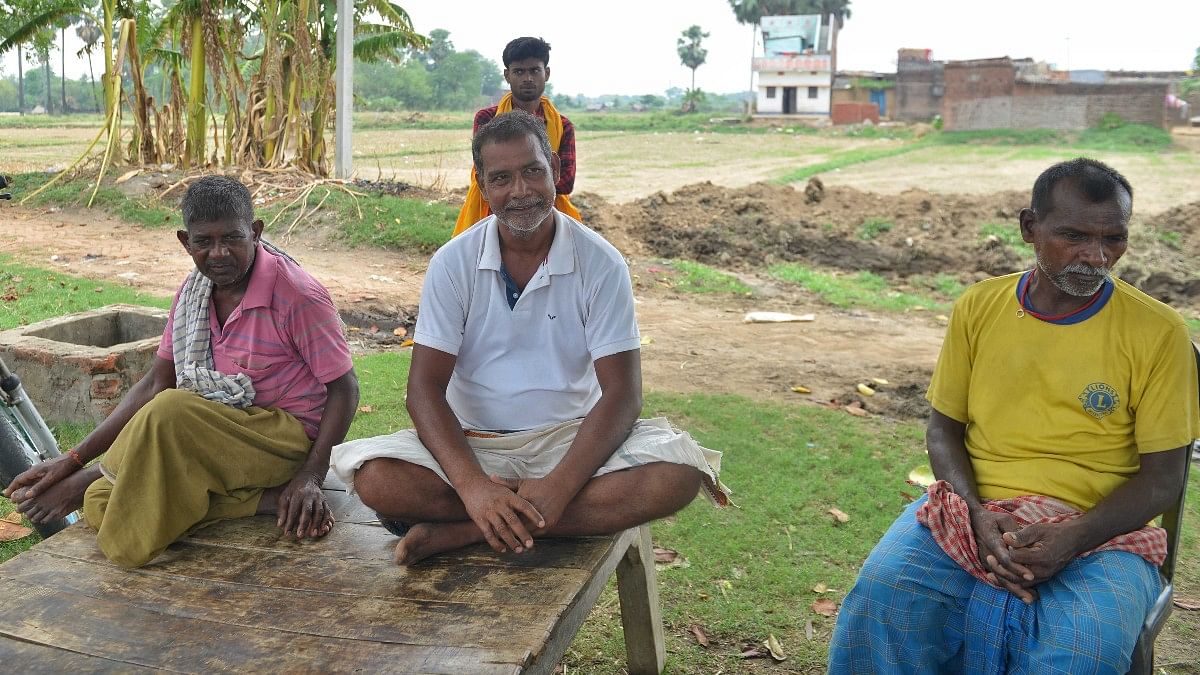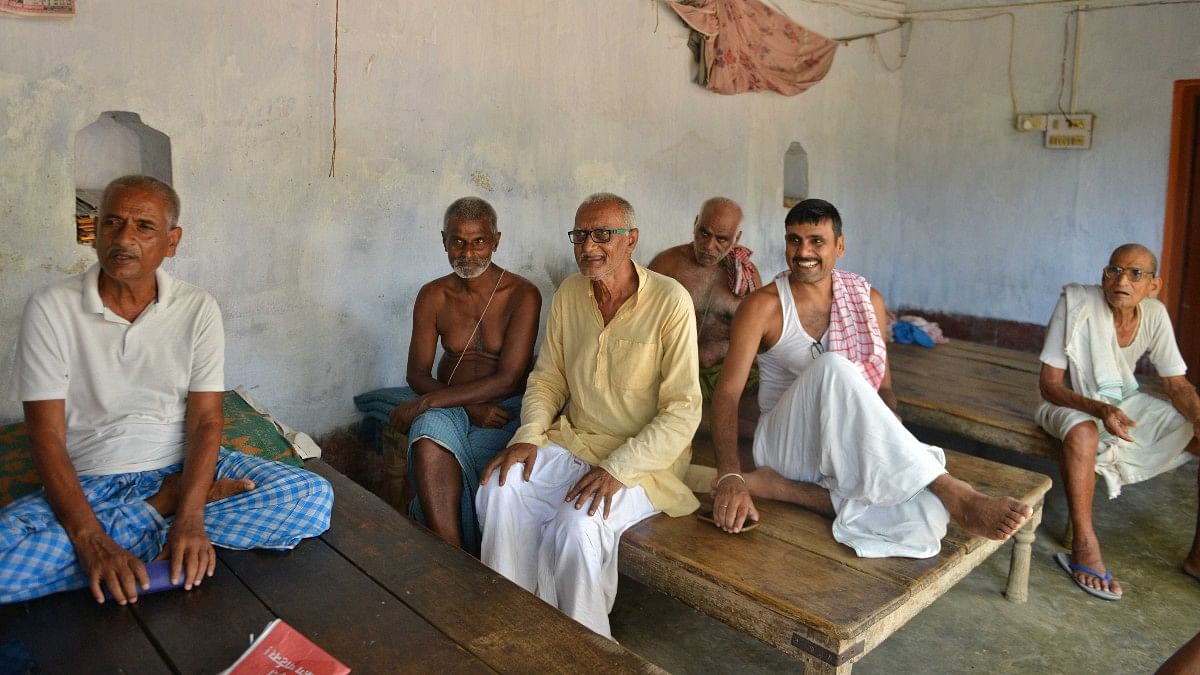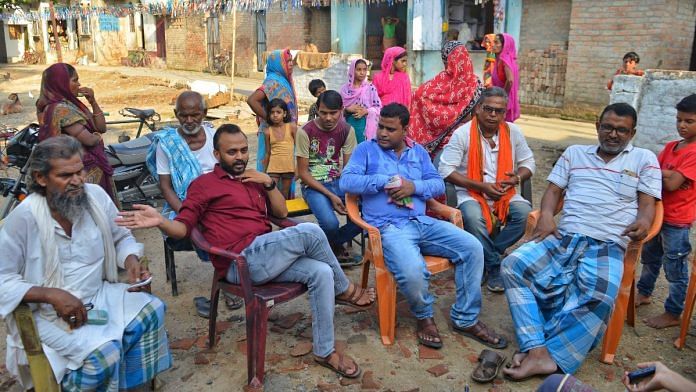Begusarai/Arwal/Patna: The Yadavs, Chandravanshis, Paswans and a Brahmin priest lounge on a cot outside the village temple playing cards for hours. But as soon as Chief Minister Nitish Kumar’s proposed caste census is mentioned, things get tense. The conversation and camaraderie fractures. The Brahmin walks away from the game awkwardly.
“He (the Brahmin) is so poor that there is no guarantee for tomorrow’s meal,” says Pradeep Kumar, a Yadav farmer, 50, referring to how the caste census can bring out new anxieties and deepen old caste lines. “But as per the caste system, he believes he’s superior to us all,” says Kumar.
As Nitish Kumar government appoints nodal officers, lays out rules and issues notification for a state-wide caste census, the news of a mega caste counting drive has reached every nook of Bihar. Every caste group is now looking at the census through the prism of future jobs and political power – some stand to win, some fear they will lose out in this audacious drive that many call Mandal 2.0. The recalibration of reservation quotas based on the new population of caste groups, something that was done way back in 1931, is at the heart of this social disquiet.
The talk of caste census is also bringing to the surface the voices of those who have felt neglected despite Bihar seeing over three decades of governance under chief ministers belonging to the backward community.
“This was long overdue. RJD is perceived to be a Yadavs party and JDU–Kurmi’s. A caste census is a must. We must know where we (Kahar) stand in numbers,” says 42-year-old Triveni Ram, a small farmer, with excitement.
But for the upper caste Bhumihars, who see it as the second wave of ‘political assault’ on their dominance after the 90s, insecurities are hard to hide.
“This was all that was left,” countered 61-year-old Varun Rai, a Bhumihar from Rajaura village in Begusarai district. “Now the government will plan to favour certain castes and those who are large in numbers.”
Also read: Don’t limit caste census to Hindus. Include tribals, Dalits of Muslim, Sikh, Christian faiths
A social thermometer
Political experts call the proposed exercise a thermometer that is going to cure the inequalities and inadequate representation based on exact numbers.
Sanjay Kumar, Political Analyst and a Professor at CSDS, says, “These anxieties and aspirations will be authenticated by exact numbers that this census will bring out.”
“As of now, the numbers are covered under vague terms. If you are suffering from fever, your doctor needs to know your exact body temperature. So, a thermometer is required to cure you. The caste census drive is going to work like that,” he adds.
According to a report published in The Hindu, nine social organisations plan to do a campaign in Bihar to get the caste census executed in a most “rational way” that focuses on population-wise representation and participation at all levels.
The Bihar experiment also captures the political fragmentation on the issue. The regional players want it, the state unit of a national party wants it but the Centre cannot hold—the caste census. Bihar has been a difficult state for the BJP and Modi. India’s politics since 2014 has been riding on the waves rising from the Hindi heartland states, the cow belt, but a complete control over Bihar still eludes the party as it continues to play the second fiddle. So, the BJP may be trying a different approach for this state.
Contrary to the general perception that the Bharatiya Janata Party (BJP) is not in full support of Nitish Kumar’s surprise announcement, party leader and former Bihar deputy CM Sushil Modi has said that they are ‘aggressively supporting’ this exercise. The BJP seems to be playing dual card—one for Bihar, one for the Modi government at the Centre.
Bihar can give the BJP a clue on how to go about it nationally. For now, it’s a laboratory.
“We have sent our representatives with CM Nitish in an all-party delegation to meet PM Modi twice,” says Sushil Modi. “Similarly, Jharkhand BJP’s president Deepak Prakash was also part of a delegation from Jharkhand for caste census. BJP had issues with logistics and procedures but never against caste census.”
Remaining out of power for over 17 years now, barring those 20-odd months with Nitish Kumar between 2015-17, has forced the Lalu Prasad Yadav’s RJD to take a more accommodative stance but without compromising on its core votebank—the backwards. Its new approach is visible in its statements.
RJD leader Manoj K Jha, allaying the fears of those who worry the caste enumeration will negatively impact their socio-economic status, says, “No caste group should have any fear. We also collect religious data but can we blame the data for communal riots? Caste census does not mean caste divide but it is a drive to collect the scientific data on which the government can decide which caste groups need more attention and which caste need sub categorisation.”
“This data will guide the government to formulate policies for a greater balance in the society,” he adds.
Mandal Commission recommendations changed the politics of the Hindi belt in transformative ways, and now the political parties that benefited from it are already positioning themselves for a possible makeover ahead of what Bihar’s caste census may bring up. Nitish Kumar’s Janata Dal (United) alliance partner BJP’s Bihar unit has backed the chief minister’s decisions but at the centre, BJP has opposed caste census in Parliament. RJD too has been at the forefront demanding a caste census in the state. But it is a political hot potato that is likely to upset many existing social and political arithmetic. At the same time, it is also something that no party can afford to be seen openly opposing.
Also read: Munni Rajak — How Bihar washerwoman became Lalu pick for Vidhan Parishad
The execution challenge
Though it has been three decades since the Mandal days, the violence that had engulfed India in its aftermath hasn’t faded from the collective memory. If anything, the recent protests against the Modi government’s Agnipath scheme is an indicator of a youth disenchanted and cautious of big bang reforms.
According to Bihar’s General Administration Department (GAD), the nodal agency that will carry out the exercise, the state has enough workforce and human resources to conduct such a massive, complex and contentious exercise. The process will be carried out digitally by the Bihar Rural Livelihoods Promotion Society, also known as Jeevika, school teachers, MNREGS workers and anganwadi staff.
“Action will be taken against those who provide wrong information or refuse to share information. We have seen during the Mandal movement, there were no communication tools such as WhatsApp and Facebook back then, but still people came out on the roads. During recent times, many protests have taken a violent turn, so we need to lay out rules for those who disrupt the procedures,” an official in the GAD told ThePrint.
Also read: Caste-afraid Indians in US tech companies are hogging diversity quota of Blacks, Hispanics
Mandal 2.0?
If Mandal politics and Lalu Prasad Yadav gave many backward and most backward caste groups a sense of ‘dignity’, the new census, 55-year-old Fateh Paswan, another small farmer, of Sonvarsa tola in Arwal district says, will take the process forward – from intangible to more tangible benefits.

This time, many Muslims too hope that they will be counted in the caste census. Ahmad Hussain, ward member of Rajaura Panchayat in Begusarai district, refers to the “minority tag” that instills psychological fear” among the members of his community, and hopes that the census could reveal an increased number that removes this tag.
It is the Bhumihars, land owners, that are in direct conflict with other castes. The major caste wars in the 90s were also connected to the land. So, in the socio-economic study that the caste census will bring out, they fear that they will be losing.

Bhumihars are most vocal about the proposed caste census. They are also the transitional voters for BJP in Bihar. OBCs and rest are with JD(U), RJD, LJP etc. And this caste group has not been pacified by the BJP. They believe that the current leaders lack conviction and oratory skills and that is why their sentiments are crushed by the parties dominated by backwards.
Aiyara in Arwal, a Bhumihar-dominated village with a population of 5,000, has voted for the BJP in large numbers. But it has its own reservations. The younger generation has moved out to cities like Patna and Delhi. Those of the older generation and who own land either lease out the agricultural land or employ the lower castes from nearby tolas. Land has been the cause of many caste conflicts in the 1990s.
While the older men cursed the Mandal movement, Deepak Kumar, 40, a BJP supporter believes that it will shift the Hindu-Muslim politics to caste politics: “We are against caste census. The caste census will mean the politics will revolve around caste only. Right now, politics is conducted under Hindu Muslim binary.”
Umeshwar Singh, 73, echoed a similar sentiment, “We have only to lose in this caste-based counting, there is no win for us in this number game.”
(Edited by Anurag Chaubey)



